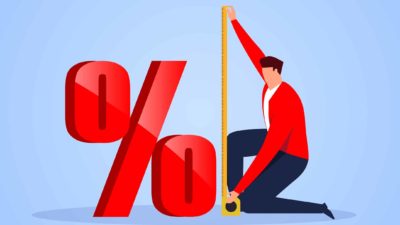All investing eyes today will no doubt be on the S&P/ASX 200 Index (ASX: XJO). Fresh off making another new all-time high of more than 7,400 points last week, the ASX 200 has cratered today. It has lost a hefty 1.71% and is now back below 7,300 points at 7,242 at the time of writing.
That's a sharp reversal to be sure. But there is another investing indicator that has performed an even more abrupt U-turn over the past week. That would be our sovereign currency – the Australian dollar.
A lower Aussie dollar
The Aussie dollar, until last week, had looked very comfortable, to the point of appearing lethargic. It had stayed in a band between 76 and 78 US cents ever since the start of the year. Just last Monday (a mere week ago), it was sitting happily at 77.1 US cents. But this morning, the Aussie dollar was trading as low as 74.8 US cents. That might not look like a meaningful difference. But it a fairly dramatic move for the national currency. Remember, it has only bounced around by a couple of cents since January.
We won't get too deep into what caused this shift. But essentially, it's likely to be a consequence of the US Federal Reserve's 'hawkish pivot' last week. The Fed announced that it's now considering the possibility of raising interest rates a lot sooner than it had previously flagged. Theoretically, if the US has a higher interest rate than Australia, it would attract capital away from Australian financial markets. This would in turn cause more Aussie dollars to be flowing out of Australia, reducing demand for Aussie dollars and thus lowering the 'cost' of buying said dollars. This is the situation that currency markets might have been anticipating over the past week.
To lose 3 cents in less than a week is a big move. And one that has real consequences for ASX shares. So what are these consequences?
Some ASX winners and losers
Well, a lower Aussie dollar means that importing goods into Australia becomes more expensive for Australian businesses and consumers on average. It also means that, conversely, exporting goods and services out of Australia becomes cheaper. Thus, any business that exports goods are a potential beneficiary of this situation. Think any mining company, such as BHP Group Ltd (ASX: BHP) or Rio Tinto Limited (ASX: RIO). Since iron ore (as well as most other commodities) is priced in US dollars, these companies can now sell their iron ore for more Australian dollars on paper, even though their buyers might be paying the same US dollar figure.
On the other side of the ledger, companies that import goods from overseas to sell may take a hit to their bottom lines. Think of a company like JB Hi-Fi Limited (ASX: JBH). JB is a larger retailer of technological goods like televisions, refrigerators and computers. It's likely that, since most of these goods are made overseas, the cost to JB to import them will have risen alongside our dollar. If this is the case, JB would either have to raise its store prices or otherwise take a hit to its bottom line. There would be many other ASX companies in a similar situation.
Foolish takeaway
The Aussie dollar moves around a lot and is just something that every ASX company has to deal with – albeit with varying degrees. Remember, in the past 10 years, the Aussie dollar has been as high as US$1.10 and as low as 55 US cents. Currency fluctuations are normal. But the dramatic move we have seen over the past week is certainly worth taking note of.









